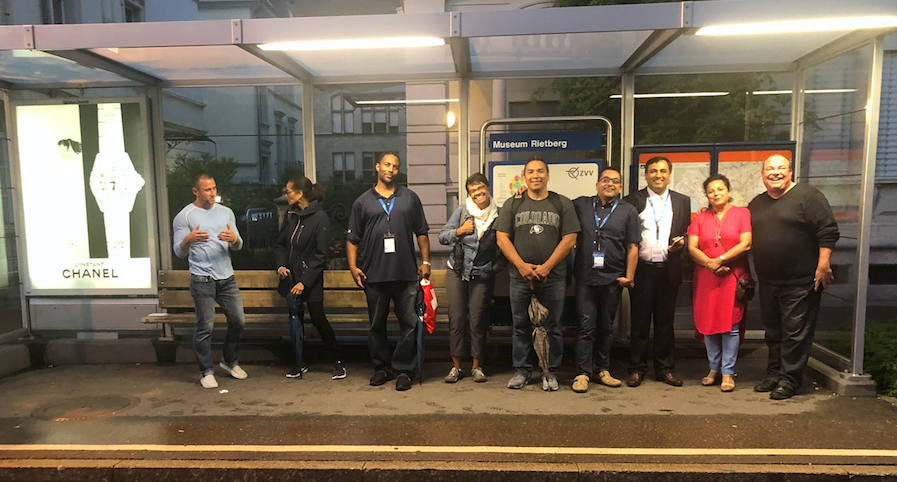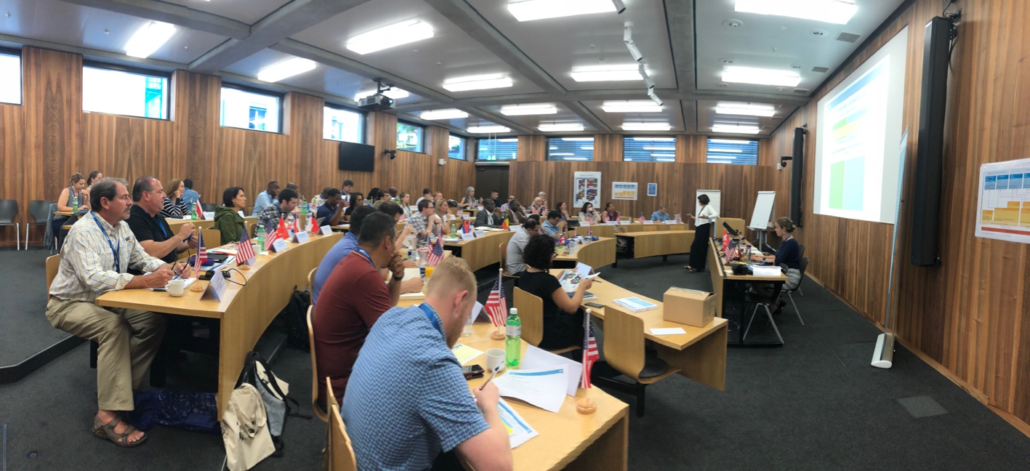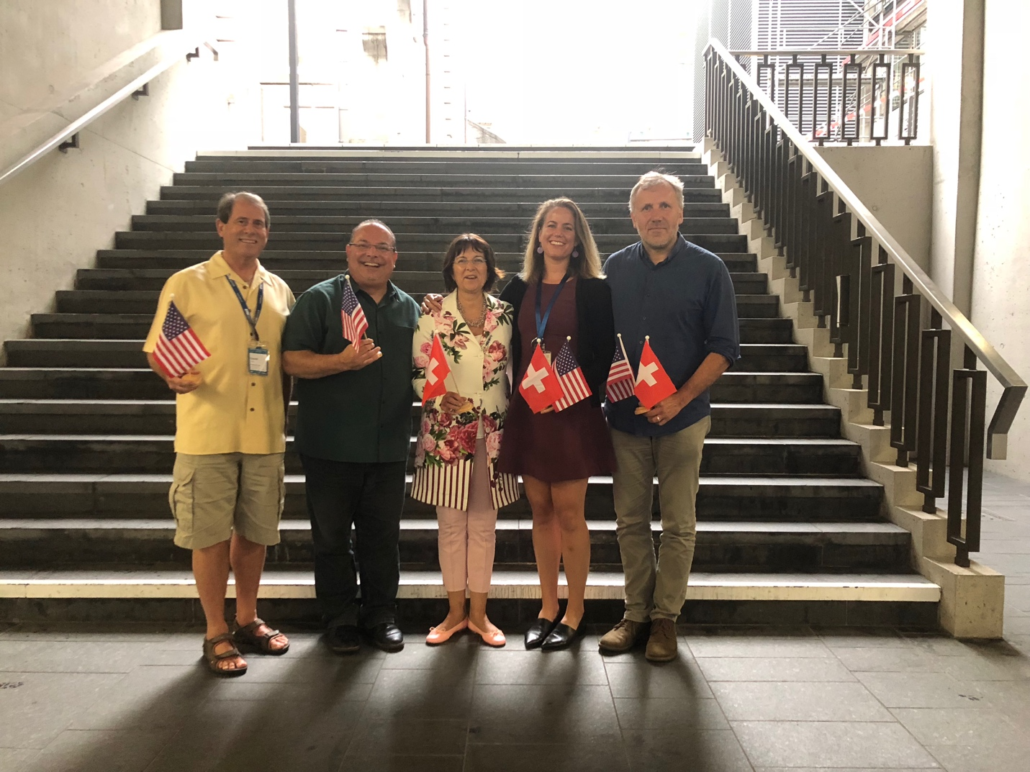In Early July 2018, Bob Lanter, Executive Director of the California Workforce Association, Economic Development Consultant David Spaur, and SPR’s Senior Strategist for Capacity Building, Vinz Koller joined the Swiss Institute of Technology, Center on Economics and Management of Education and Training Systems (CEMENTS) annual Summer Institute for an in-depth exposure to the Swiss dual education system. Together with educators and policy makers from around the world, they worked on a reform case to build a youth apprenticeship system for California. The team will provide briefings around the State on the reform case, including at CWA’s Meeting of the Minds on September 4th in Monterey. For more information on the project, contact Vinz Koller at Vinz_Koller@spra.com or Bob Lanter at blanter@calworkforce.org.
Social Policy Research Associates
C: 831-277-4726
By Vinz Koller
It’s 8:30 in the morning and the 60 CEMETS course participants from 8 countries are assembled in the Central Railway Station in Zurich to head out to another site visit to a technical school. Today, it’s the CYP “Challenge Your Potential” training center by the Swiss Bankers Association. The team heads to the tram, which picks us up and deposits us, right in front of the school – housed in a refurbished steel manufacturing plant – now a slick school for future bankers. The banker apprentices who address the group – just before their graduation – are poised and mature beyond their age. But it’s clear that – like their contemporaries anywhere around the world – they were not enamored with school when they started their apprenticeship, three years earlier – when they were just 16. They were attracted by the training wage – the prospect of future travel – and by the idea of getting out of the classroom. Now they were visibly proud of their accomplishments and somewhat worried whether they had passed their final exams. Peter, a snappy dresser who likes to look the part of a banker, said that one of his highlights as an apprentice was when he discovered a money laundering scheme – while still an apprentice. It sealed the deal for him. He was certain that he had found his calling. But even though he had a number of job offers in hand, he wanted to go on to get additional university-level training before going to work for a bank full-time.
His apprenticeship – like that of tens of thousands of commercial employees in banking, retail, insurance, among many others consisted of 1-2 days in business school, 3-4 days on the job in a bank, and one day per month – at the CYP for specialized courses on banking. While in their apprenticeship they earn from $1000 – $1600 per month, upon graduation, they can expect $55,000 starting salary – as a 19-year old.
No wonder 70% of young Swiss chose an apprenticeship over an academic path while still in high school. And no wonder Switzerland’s youth unemployment rate is under 3%.
They were pressed for answers about their experiences, by the CEMETS delegations. No, said the apprentices, they did not know what a school drop-out was, and they had never heard of anyone going into debt to get an education. That’s also a major reason Swiss parents don’t see apprenticeships as second-rate education – not with the prospect of a profession and a steady income by age twenty, with intact prospects for advanced training or an advanced degree for those who want it.
The CEMETS participants were intrigued by what they had seen: A training system that accommodates the needs of the workplace with those of the students. The real motivation for students to study comes from being exposed to the needs of the workplace – not so much from pressure at school.
It’s experiences like these that brought teams from Nepal, South Africa, Croatia, Benin, Chile, Costa Rica, and the US, to Zurich, to learn how their own system reform efforts could be improved to become more industry oriented and student centered. The mantra that Ursula Renold and Katie Caves – the leaders of the CEMETS Summer Institute – kept repeating was the need for a systemic approach. Particularly the two US teams were regularly challenged to move from building programs to building systems, with portable curricula and credentials, where each partner had a clear role and where businesses were sufficiently motivated by their self-interests so that subsidies were not necessary. “Government subsidies tend to make employers train apprentices for the wrong reasons and lead to worse outcomes” said Professor Stefan Wolters, a leading expert on the ROI of apprenticeship systems.
And indeed, Swiss businesses are the primary champions of the apprenticeship system and invest a hefty $5 billion annually in apprenticeship education. They can expect to make $5.5 billion back during the initial training period alone. This is because trainees, who work at low training wages, increase their productivity so much that they increase company profits, even while being paid for attending school and going to work.
CWA’s Bob Lanter came with high expectations. “I was still blown away by how business and industry is totally invested in the development of talent at all levels. I will never look at apprenticeship programs the same way again. It’s so clearly a fit for the US and for California.”
Developing a plan to scale up such a youth apprenticeship system is not a simple matter. The CEMETS coaches remind the teams on their last day, to find leaders in industry and among all the stakeholder groups to help navigate the complex system changes that are needed. David Spaur is convinced that businesses who are clamoring for talent will come on board “especially if the ROI can be as positive as it is in Switzerland. And the idea that student debt could be reduced by as much as $16 billion and that apprentices add $18 billion in spending power in California alone just boggles the mind. We can’t afford not to do this!”





